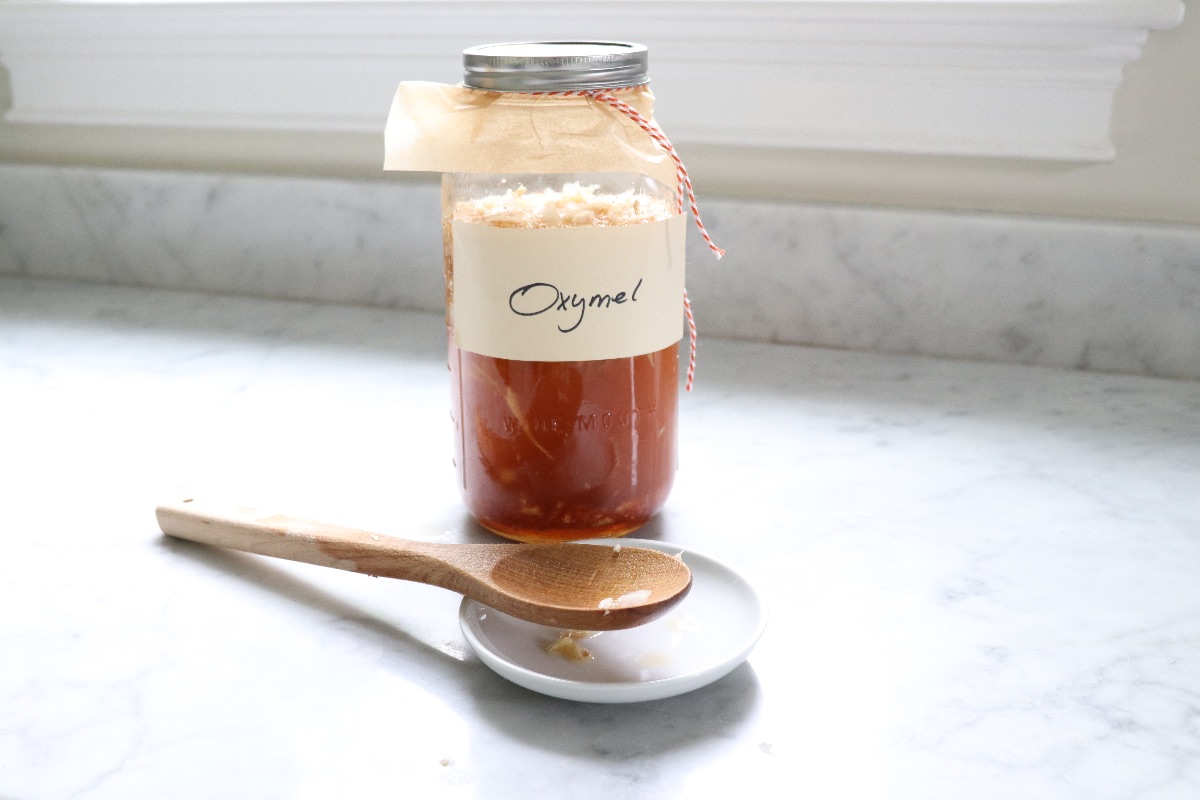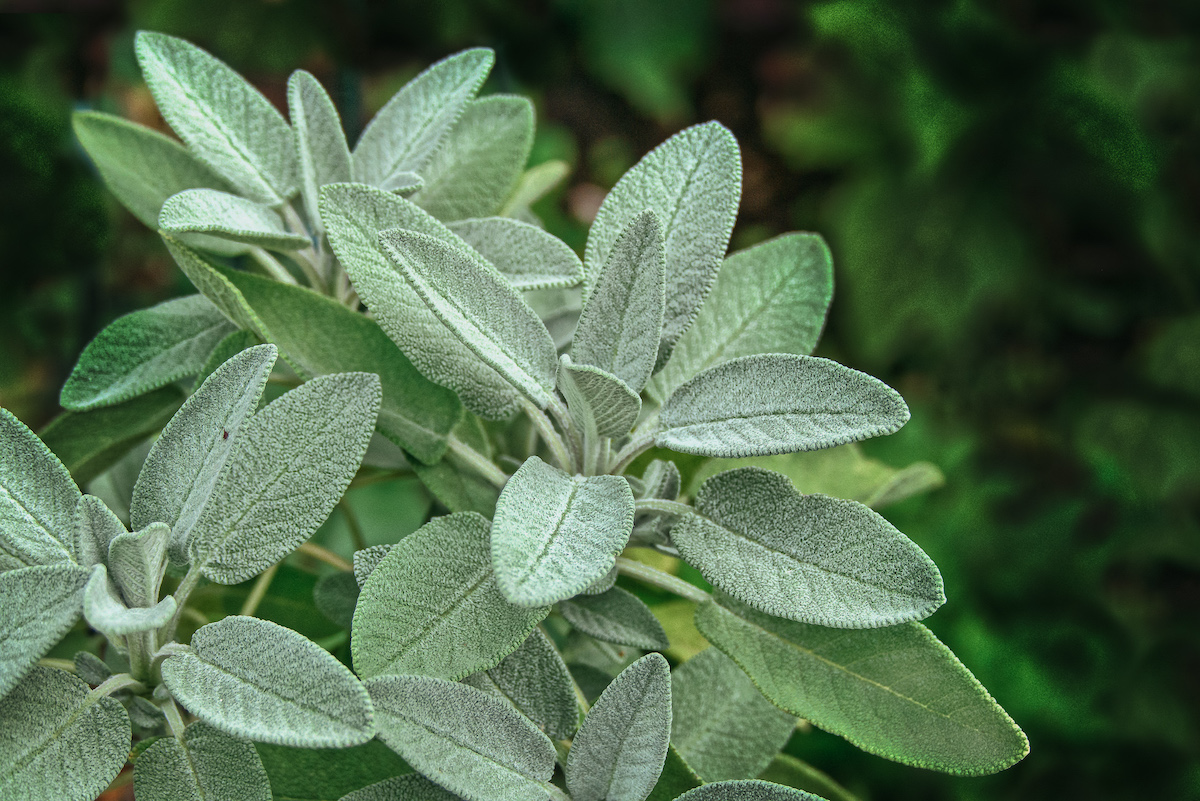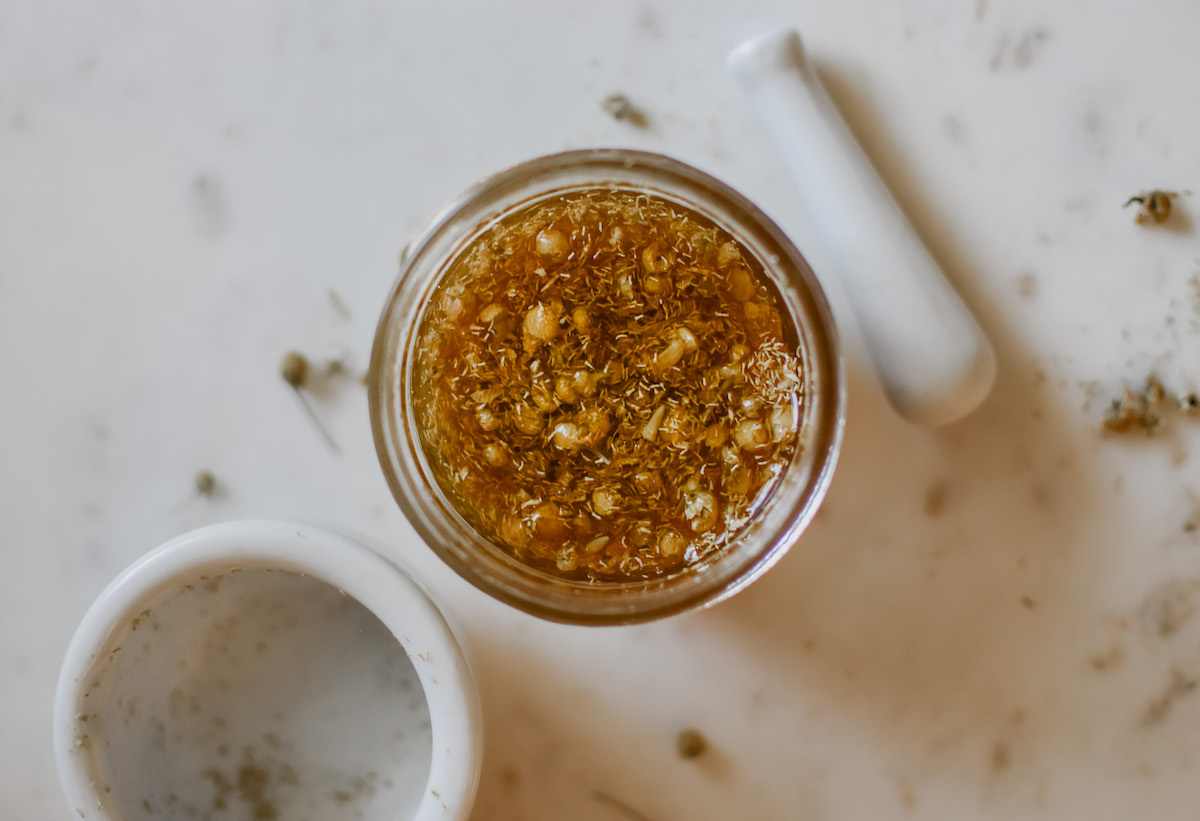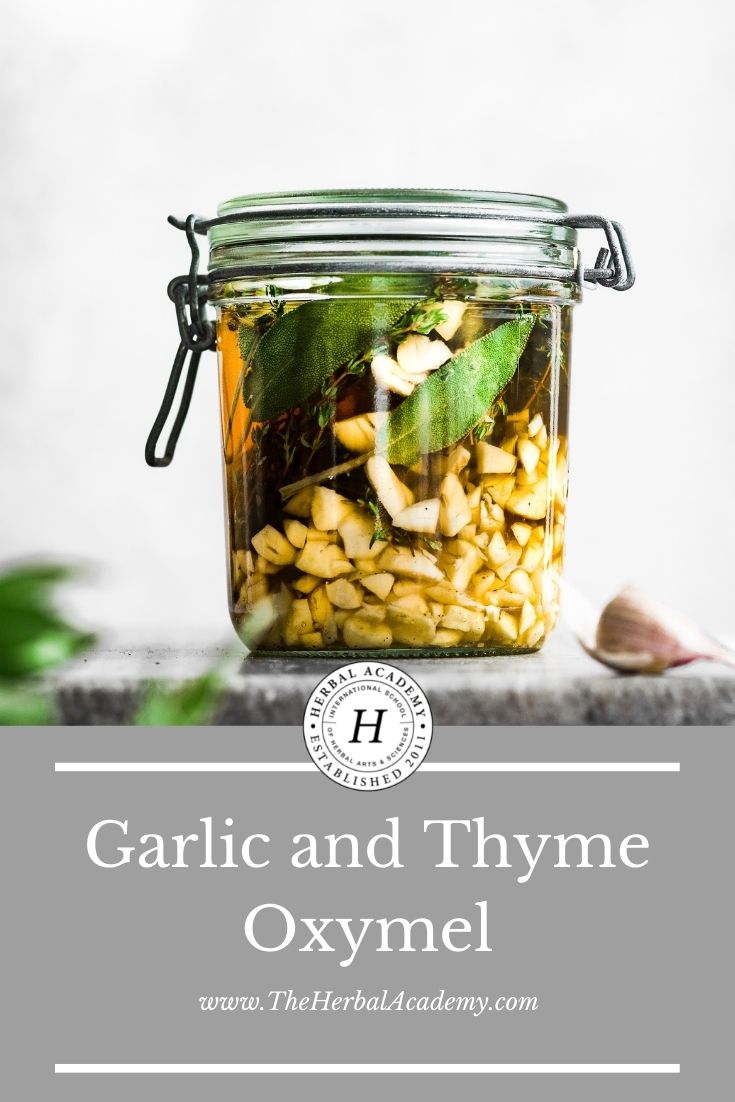
Garlic and Thyme Oxymel
Some of the best herbal preparations are the simplest—made with the ingredients you likely have sitting in your kitchen right now. This Garlic and Thyme Oxymel is one such preparation: easy to make, delicious, and perfect to tuck in the cupboard for just those times you need a little extra respiratory or immune support.

What’s an Oxymel?
Oxymels are a potent sweet and sour herbal preparation made by steeping herbs in vinegar and honey. They’re traditionally used to support respiratory health, especially when made with a combination of antiviral and immune-supportive herbs such as garlic (Allium sativum) or sage (Salvia officinalis).
A bit of history on oxymels—honey-rich oxymels are an ancient remedy with roots in Greece and Persia. Its name translates to “acid and honey,” and the beautiful sweet-sour blend of vinegar and honey makes oxymels a pleasant way to incorporate bitter and strong-tasting herbs into your botanical medicine cabinet. The sweet taste of honey can disguise or, at the very least, balance bitter herbs, softening their flavor and increasing their palatability. The sweetness of honey buffers the bracing acidity of vinegar, and both work together with herbs to help soothe a sore throat, ease a nagging cough, and support the immune system during cold and flu season. Simple and uncomplicated, oxymels are also easy to make.
Beyond its benefits for respiratory health and immune system support, oxymels taste delicious—especially this version which combines three common culinary herbs you can find in many kitchens: garlic, thyme, and sage. Over time, they release their flavor, aroma, and beneficial botanical compounds into the oxymel’s vinegar base. The result is sharply herbaceous and pleasantly pungent. Another wonderful aspect of oxymels is their versatility. This Garlic and Thyme Oxymel is just as good to use in the kitchen as a marinade or blended with olive oil for a vinaigrette as it is taken off the spoon when you feel under the weather.

What’s In It?
Vinegar and honey form the foundation of oxymels. Herbs then bring their own beneficial compounds and flavor to the preparation and offer a way for you to personalize your blend to suit your needs and preferences. I usually make my oxymels by first steeping the herbs in vinegar, and then I strain the vinegar after about a month to six weeks before mixing it with honey.
Apple cider vinegar is a good choice for making oxymels because it is both affordable and easy to find in most grocery stores. You can also use other kinds of vinegar, too, such as white or red wine vinegar if you prefer. In this recipe, vinegar primarily acts as a medium for herbs, yet is also a functional food containing various beneficial bioactive compounds such as polyphenols and organic acids (Xia et al., 2020).
Raw honey buffers the acidity of vinegar, lending a pleasant sweetness to this oxymel recipe. Also, raw honey is rich in anti-inflammatory polyphenols as well as trace amounts of vitamins and minerals. It’s traditionally used to soothe an irritating cough, and some research finds it compares favorably in its efficacy to cough medicines (Shadkam et al., 2010). Honey, and preparations containing honey, should not be given to infants under 1 year.
Garlic (Allium sativum) is a common culinary herb that acts as a powerful ally during cold and flu season. It combats inflammation and supports the immune system (Arreola et al., 2015). A small study found that garlic supplements helped to both reduce the risk of getting a cold and shorten the duration of colds in comparison to a placebo (Josling, 2001).
Thyme (Thymus vulgaris) tastes delicious when combined with garlic, and honey’s sweetness brings the herb’s floral undertones forward in this oxymel recipe. Thyme has a long history of use as an herb that supports respiratory health and dispels congestion. It is also rich in various botanical compounds such as thymol and rosmarinic acid, which is strongly anti-inflammatory (Luo et al., 2020).
Sage (Salvia officinalis) has a pungent flavor with notes of citrus and eucalyptus. It’s traditionally used to support mental clarity and cognitive health, and it also performs the dual purpose of supporting the respiratory system. Sage helps open the airways (Gilani et al., 2015). In addition, it makes a pleasant herbal tea to soothe a sore throat. Sage can slow milk production, so avoid it if you’re breastfeeding.

If you have a nasty cough or a sore throat, you can take this oxymel straight off the spoon as a fast remedy, but I like to use oxymel as a replacement for vinegar in vinaigrettes and salad dressings. The blend of garlic and herbs makes it an excellent match for most salads, and all you need to do is whisk the oxymel into a little mustard and olive oil. Yield: about 2 cups.
1 cup garlic (Allium sativum) cloves, choppedGarlic and Thyme Oxymel Recipe
1/4 cup chopped fresh thyme (Thymus vulgaris) leaves
1/4 cup chopped fresh sage (Salvia officinalis) leaves
1 cup apple cider vinegar, plus more if necessary
1/2 cup honey
Vibrant Botanicals
This recipe comes from Vibrant Botanicals, a cookbook all about simple, nourishing foods and easy herbal remedies you can make at home. It includes energy-boosting recipes for the morning, recipes to lift your spirit, get a good night’s sleep, or even support your immune system.
Reprinted from Vibrant Botanicals. Copyright © 2021 by Jennifer McGruther. Photographs copyright © 2021 by Jennifer McGruther. Published by Ten Speed Press, an imprint of Random House, a division of Penguin Random House

REFERENCES
Arreola, R., Quintero-Fabián, S., López-Roa, R. I., Flores-Gutiérrez, E. O., Reyes-Grajeda, J. P., Carrera-Quintanar, L., & Ortuño-Sahagún, D. (2015). Immunomodulation and anti-inflammatory effects of garlic compounds. Journal of Immunology Research, 2015, 401630. https://doi.org/10.1155/2015/401630
Gilani, A. H., Rehman, N. U., Khan, A., & Alkharfy, K. M. (2015). Studies on Bronchodilator Activity of Salvia officinalis (Sage): Possible Involvement of K+ Channel Activation and Phosphodiesterase Inhibition. Phytotherapy Research, 29(9). 1323–1329. https://doi.org/10.1002/ptr.5384
Josling P. (2001). Preventing the common cold with a garlic supplement: A double-blind, placebo-controlled survey. Advances in Therapy, 18(4), 189-93. https://doi.org/10.1007/BF02850113
Luo, C., Zou, L., Sun, H., Peng, J., Gao, C., Bao, L., … Sun, S. (2020). A Review of the Anti-Inflammatory Effects of Rosmarinic Acid on Inflammatory Diseases. Frontiers in Pharmacology, 11, 153. https://doi.org/10.3389/fphar.2020.00153
Shadkam, M. N., Mozaffari-Khosravi, H., Mozayan, M. R.(2010). A comparison of the effect of honey, dextromethorphan, and diphenhydramine on nightly cough and sleep quality in children and their parents. Journal of Alternative and Complementary Medicine, 16(7), 787-793. https://doi.org/10.1089/acm.2009.0311
Xia, T., Zhang, B., Duan, W., Zhang, J., & Wang, M. (2020). Nutrients and bioactive components from vinegar: A fermented and functional food. Journal of Functional Foods, 64, 103681. . https://doi.org/10.1016/j.jff.2019.103681.








